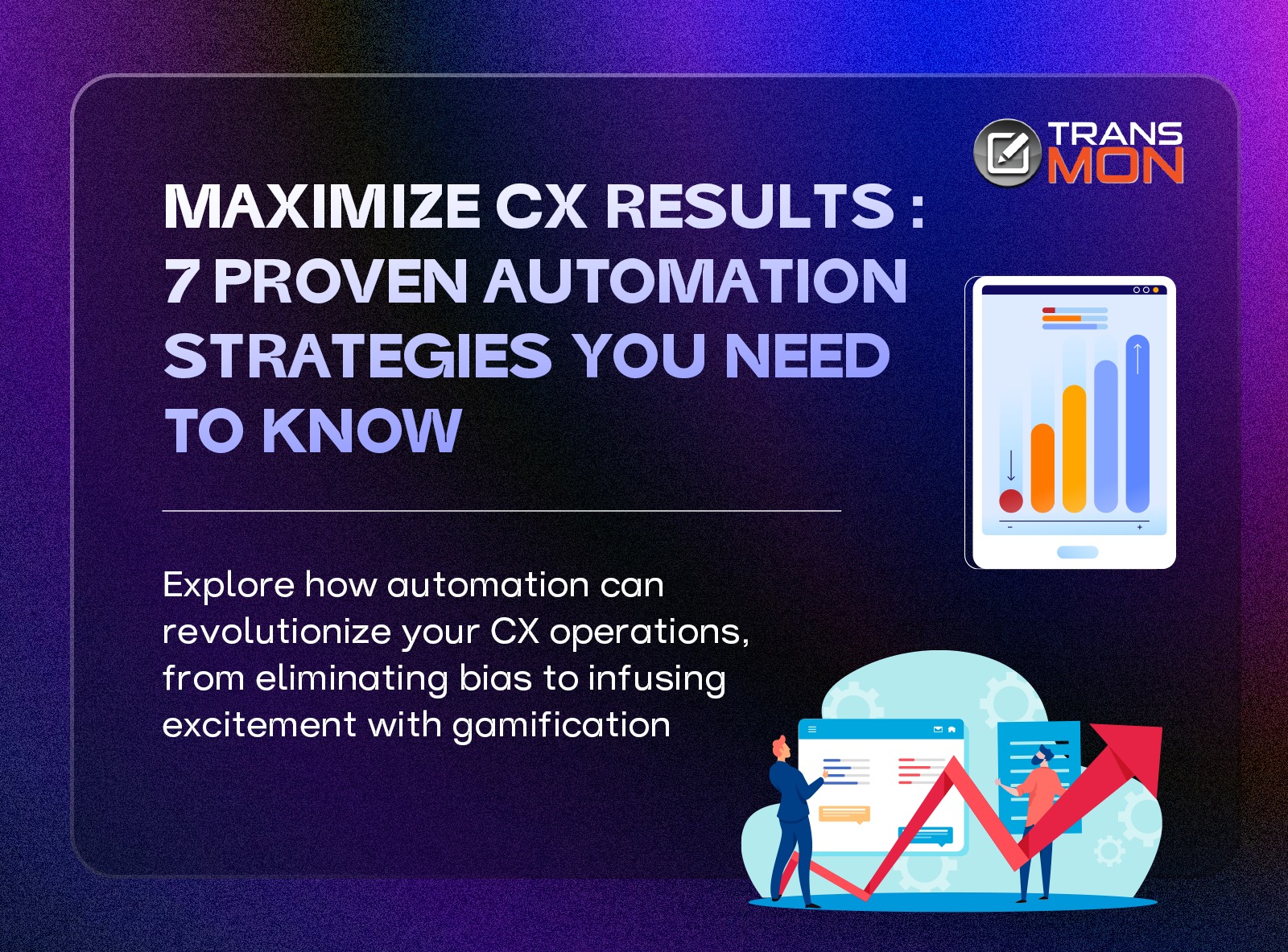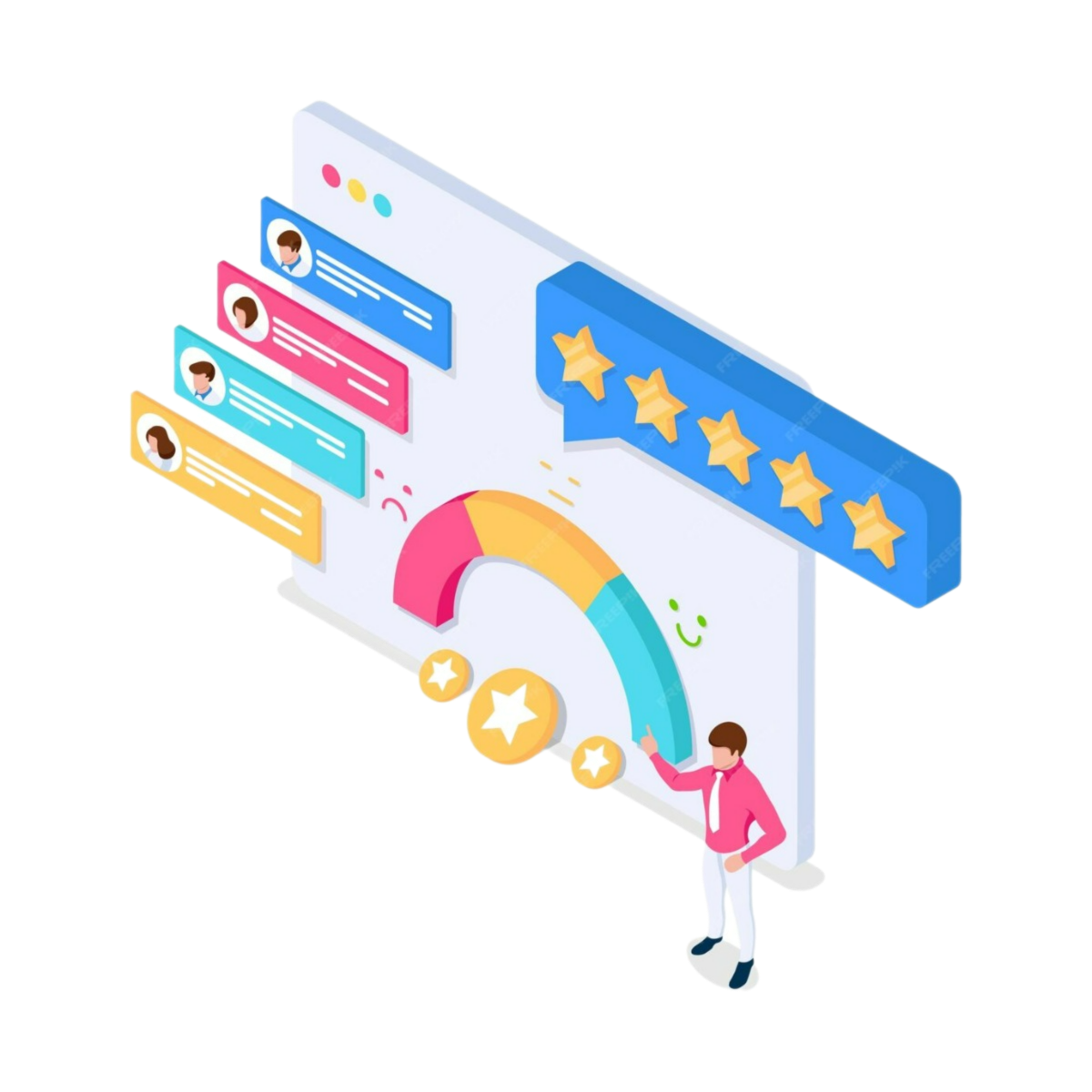In today’s fast-paced world, businesses are constantly seeking ways to streamline operations, increase efficiency, and ultimately improve performance. One powerful tool that has emerged to meet these demands is automation. By automating repetitive tasks and workflows, businesses can save time, reduce errors, and allocate resources more effectively.

Here are seven ways automation can supercharge performance across various domains, thereby improving performance with automation:

1. Utilize Automatic Conversation Selection and Assignment
In the quest to improve performance with automation, it’s common for evaluators to gravitate towards simpler tasks when confronted with a heavy workload. The tendency to prioritize shorter calls, which often result in faster resolutions and aid in meeting quotas, can inadvertently introduce selection bias. At TransMon, we tackle this issue through our ‘Auto work queues’ system. These queues combat selection bias by randomly assigning calls for evaluation to evaluators, thus removing the cognitive burden of decision-making and saving valuable time. Moreover, these queues can be tailored to specific parameters to ensure a diverse range of conversations for evaluation. This streamlined approach offers a simple yet effective method for mitigating selection bias and ultimately improving overall performance through automation.
2. Unlock Valuable Insights Through AI Support
Artificial intelligence is positioned to become an indispensable asset in the evolution of contact centers, offering immense potential to improve performance with automation. One of its key advantages lies in its ability to extend quality assurance (QA) coverage to encompass 100% of the conversations within your contact center. AI facilitates a more thorough examination of conversation metadata, delivering comprehensive insights. For example, AI algorithms can discern sentiment by identifying specific trigger words and flag instances of vulnerability and compliance issues. This capability empowers you to identify and analyze high-risk conversations across all operations, not just those undergoing evaluation. By leveraging AI-enabled QA processes to cover all conversations, you can further enhance your analysis to identify indicators of agent underperformance. Additionally, these flagged conversations can be automatically routed to evaluators for review, thereby enhancing the efficiency of your quality management efforts.


3. Automatize the Agent–Evaluator Feedback Cycle
Transparency is crucial for enhancing operational performance and boosting employee satisfaction. An automated dashboard plays a pivotal role in achieving this transparency, ensuring that everyone remains updated with the latest data in real time. Granting agents access to their data, mirroring that available to team leaders and evaluators, fundamentally alters the dynamics of coaching and one-on-one sessions. It redirects the focus from future actions to past performance, allowing agents and team leaders to engage in discussions about goals, current status, and strategies for achieving those goals. By facilitating such transparency and accessibility to data, this approach contributes to optimizing time management and enriching the employee experience through automation, thereby improving performance across the board.
4. Utilize Real-Time Dashboards for Data Accessibility
Automating scoring based on conversation content is a powerful way to improve performance with automation. For example, by implementing an auto scorecard for customer vulnerability, you can assess agent performance more effectively. This automation doesn’t replace evaluators but enhances their analysis, providing additional insights into conversations. It enables easy identification of high-risk interactions for deeper evaluation, ensuring valuable feedback for agents. Ultimately, this approach elevates the importance of evaluator work, reducing the risk of the QA program becoming a mere checkbox exercise.


5. Utilize Automated Quality Scoring
Modern quality assurance (QA) programs prioritize the employee experience, and rightfully so! Engaged agents are known to be happier agents.
In fact, research by Gallup reveals that engaged employees contribute to companies achieving 21% greater profitability and 10% higher customer ratings.
Gamification presents a method to energize teams. Employ a platform that automatically grants points and badges for specific actions and accomplishments, and observe as agents eagerly vie for the top spots on leaderboards, anticipating rewards for their efforts.
Implementing gamification doesn’t have to be intricate. Once you’ve established the rules within your software—such as leaderboard duration and point allocation—the games can commence!
6. Infuse Work with Excitement Through Gamification
Expanding upon the conventional applications of AI, such as tagging and sentiment analysis discussed earlier, advanced platforms are harnessing generative AI to improve performance with automation, incorporating a wide range of factors, from agent responses to broader context to automated scoring.
Generative AI within quality assurance (QA) not only provides reasoning for its scoring decisions but also suggests enhancements, effectively acting as an insightful co-pilot for your evaluators. While the decision to incorporate these insights ultimately rests with them, leveraging them can significantly improve performance with automation, enabling broader coverage in less time. Given the multitude of avenues for automation available, there is a diverse array of strategies to consider adopting.


7. Implement Generative AI: Advancing Contact Centre Operations
To improve performance with automation, it’s essential to ensure that no evaluation or feedback slips through the cracks, goes unnoticed, or fades from memory. Quality assurance (QA) isn’t solely about compliance but also about ensuring that agents consistently deliver outstanding service to customers.
Seal the feedback loop by automating it! When an evaluator submits feedback, have your software automatically alert the agent. Enable them to review it and confirm that they’ve absorbed the information—subsequently triggering a notification to the evaluator indicating acknowledgment. Providing agents with real-time feedback empowers them to take corrective action in their subsequent interactions.
Moreover, if deemed necessary, you can incorporate this feedback into training, coaching sessions, and one-on-one discussions to foster further improvement.
Identify your contact center’s specific pain points and explore whether they can be alleviated by minimizing opportunities for human error or bias, then progress from there. Embrace the journey of automation!




